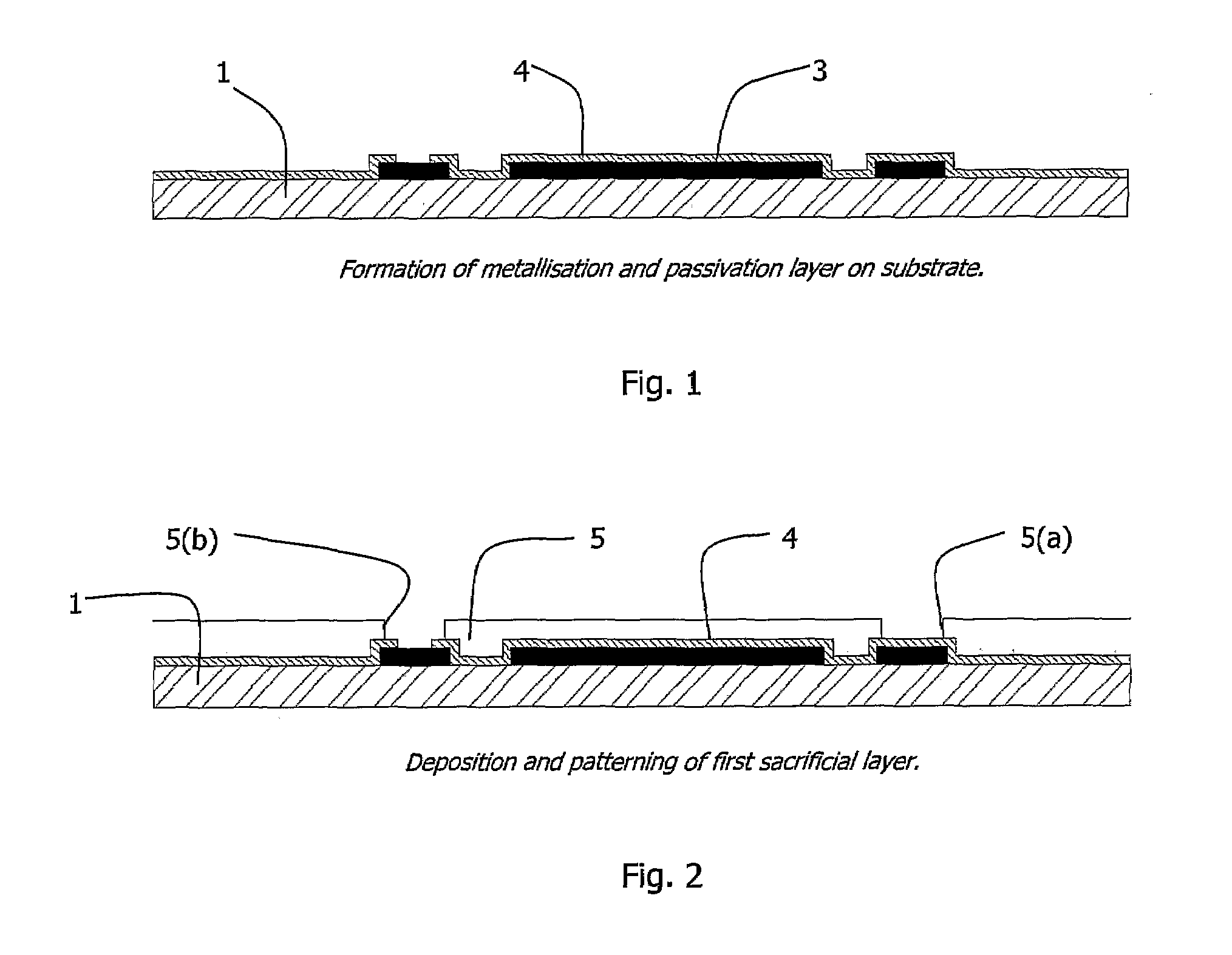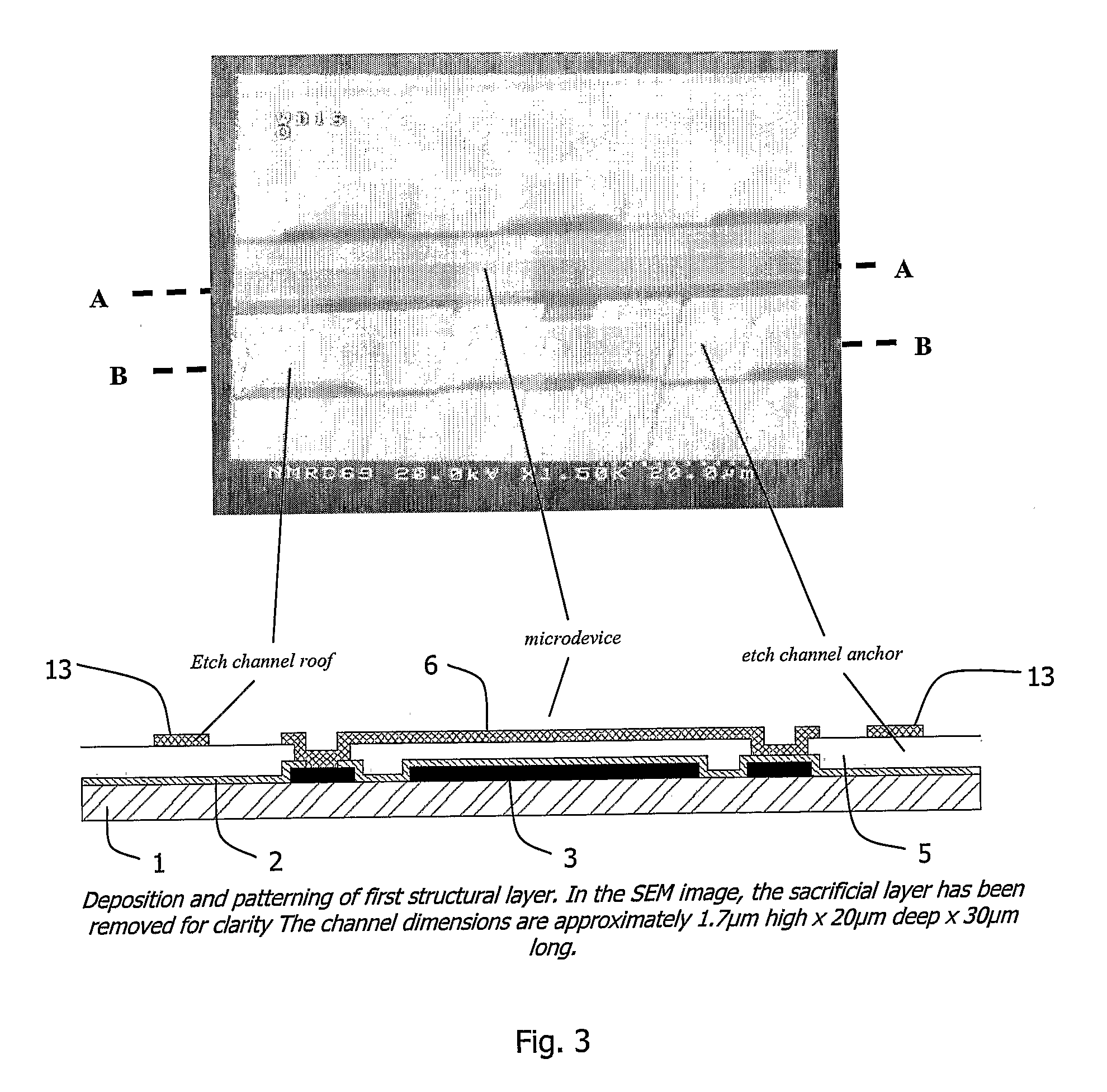Packaging of Micro Devices
a micro-device and packaging technology, applied in the field of structure packaging, can solve the problems of high temperature in the process, unprotected movable components of mems devices are unlikely to survive standard packaging steps, and the cost and complexity of packaging, and achieve the effect of reducing the height of the channel
- Summary
- Abstract
- Description
- Claims
- Application Information
AI Technical Summary
Benefits of technology
Problems solved by technology
Method used
Image
Examples
Embodiment Construction
Brief Description of the Drawings
[0046]The invention will be more clearly understood from the following description of some embodiments thereof, given by way of example only with reference to the accompanying drawings in which:—
[0047]FIGS. 1 to 10 are cross-sectional diagrams showing a packaging process of the invention;
[0048]FIG. 11 is a diagram showing a final packaged device and the key to shadings used in the preceding drawings;
[0049]FIG. 12 is an SEM image of a fabricated and sealed micro-cavity;
[0050]FIG. 13 is a plan view photograph of a fabricated and sealed micro-cavity, illustrating the structure within;
[0051]FIG. 14 is an electromechanical result showing the performance characteristics of a packaged structure; and
[0052]FIGS. 15 and 16 are cross-sectional diagrams illustrating alternative embodiments.
DESCRIPTION OF THE EMBODIMENTS
[0053]Referring to FIG. 1, in a packaging process a silicon wafer is used as the substrate 1. However, depending on the device, the substrate mat...
PUM
| Property | Measurement | Unit |
|---|---|---|
| thicknesses | aaaaa | aaaaa |
| thicknesses | aaaaa | aaaaa |
| thickness | aaaaa | aaaaa |
Abstract
Description
Claims
Application Information
 Login to View More
Login to View More - R&D
- Intellectual Property
- Life Sciences
- Materials
- Tech Scout
- Unparalleled Data Quality
- Higher Quality Content
- 60% Fewer Hallucinations
Browse by: Latest US Patents, China's latest patents, Technical Efficacy Thesaurus, Application Domain, Technology Topic, Popular Technical Reports.
© 2025 PatSnap. All rights reserved.Legal|Privacy policy|Modern Slavery Act Transparency Statement|Sitemap|About US| Contact US: help@patsnap.com



